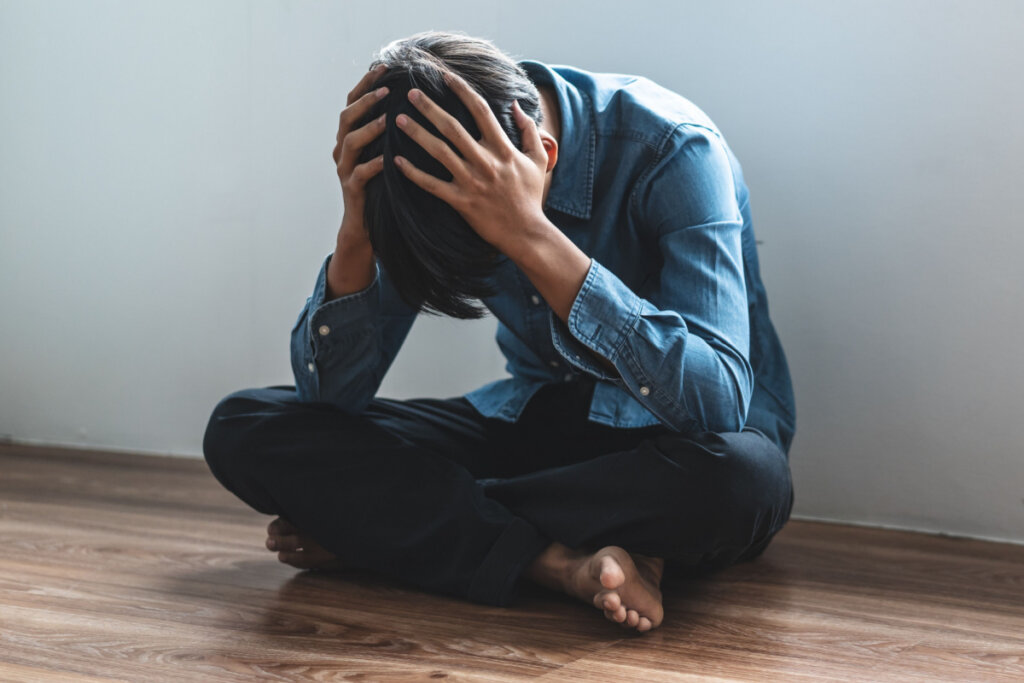The Links Between Problematic Internet Use, Depression, and Suicide


Written and verified by the psychologist Gorka Jiménez Pajares
A 2022 study aimed to analyze the relationship between problematic internet use, depression, and suicidal ideation in adolescents as a consequence of the 2020 pandemic.
One of the conclusions they drew is that the mental health of young people has considerably deteriorated. In fact, the number of reported cases of sleep disorders, behavior disorders, and negative emotions, such as loneliness, fear, or sadness, has increased.
Undoubtedly, the confinement and social isolation decreed by governments helped prevent the spread of coronavirus. However, it had a negative effect on the mental health of young people. They were forced to interact digitally on apps with their friends in order to communicate with them and reduce their feelings of loneliness.

Problematic internet use
It’s been proven that the maladaptive use of the Internet can produce harmful alterations in health and well-being. And, adolescents are one of the most vulnerable segments of the population. Moreover, if they’re studying at university, their vulnerability to suffering from mental health problems increases. This is due to the high digitization that higher education is employing today.
The confinement led to an almost two-fold increase in cases of dysfunctional use of the Internet. In fact, after the pandemic, around half of young people reported feeling more dependent on internet resources. Moreover, almost two out of ten said they’d increased the number of hours they spent browsing the web. Indeed, in reality, as well as being a useful tool for their study, the Internet had become their only source of interpersonal contact with the outside world.
“The Internet was used to combat feelings of loneliness and isolation.”
-Verónica Villanueva-Silvestre-
Depression and suicide
The prevalence rates of depression are condensed in adolescence. Prevalence refers to the number of cases of a disorder at a given time. Therefore, adolescents have a higher risk of suffering from depression compared to adults. In fact, some studies suggest the percentage of depressive symptoms in adolescents is around 60 percent.
It should be noted that there are differences in the presentation of depressive symptoms based on gender. For example, the female sex tends to present more intense depressive symptoms. On the other hand, males show a higher rate of suicidal behaviors.
“Several studies with a university population have shown an association between problematic internet use and depression.”
-Cynthia M. Apaza-
Dysfunctional use of the Internet and suicidal behavior
Depressive and anxiety symptoms have a more significant relationship with the dysfunctional use of the Internet. This occurs when people use it to deal with their emotional discomfort due to feelings of sadness or anxiety. In addition, using the Internet from a starting point of discomfort can double depressive and anxious symptoms.
Suicidal ideation, or ‘thinking about committing suicide’ and completed suicide are included under the umbrella of the term suicidal behaviors. The relationship between suicidal ideation and dysfunctional use of the Internet in the adolescent population has been contrasted in different studies.

Associations have also been found between the stress of studying for a university degree and levels of depression. Add to this the social isolation of the 2020 pandemic and it’s easy to see why the number of cases of depression in young people has been gradually increasing.
Indeed, adolescents who are feeling low with depressive symptoms and who make use of the Internet with the aim of reducing their loneliness and their negative emotions, are in an optimal position for the development of depression with accompanying suicidal behaviors.
Finally, research has been published that underlines a direct relationship between suffering from a depressive disorder and an addiction to the web as a consequence of the problematic use of the Internet. In effect, both entities (depression and addiction) feed back into each other and one enhances the other (Rocco Servicio, 2022).
All cited sources were thoroughly reviewed by our team to ensure their quality, reliability, currency, and validity. The bibliography of this article was considered reliable and of academic or scientific accuracy.
-
Villanueva Silvestre, V., Vázquez Martínez, A., Isorna Folgar, M., & Villanueva Blasco, V. J. (2022). Problematic Internet use, depressive symptomatology and suicidal ideation in university students during COVID-19 confinement. Psicothema.
- Mamun, MA y Griffiths, MD (2019). La evaluacion de internet adicción en Bangladesh: ¿Por qué las tasas de prevalencia son tan diferentes? Revista asiática de psiquiatría, 40, 46-47. https://doi.org/10.1016/ j.ajp.2019.01.017
- Gavurova, B., Ivankova, V. y Rigelsky, M. (2020). Relaciones entre Estrés percibido, depresión y trastornos por consumo de alcohol en estudiantes universitarios durante la pandemia de COVID-19: una dimensión socioeconómica. Revista Internacional de Investigación Ambiental y Salud Pública, 17(23), Artículo 8853.https://doi.org/10.3390/ijerph17238853 González,
- Apaza, CM, Sanz, RSS y Arévalo, JES (2020). factores psicosociales durante el confinamiento por el Covid-19–Perú. Revista Venezolana De Gerencia, 25(90), 402-410. https:// www.redalyc.org/articulo.oa?id=29063559022 Aznar-Díaz, I., Kopecký, K., Romero, JM, Cáceres, MP, & Trujillo-
- Bousoño,M., Al-Halabí, S., Burón, P., Garrido, M., Díaz-Mesa, EV, Galván, G., García-Álvarez, L., Carli, V., Hoven, C., Sarchiapone, M., Wasserman, D., Bousoño, M., García-Portilla, MP, Iglesias, C., Sáiz, PA & Bobes, J. (2017). Uso y abuso de sustancias psicotrópicas e internet, psicopatología e ideación suicida en adolescentes. Adicciones, 29(2), 97-104. https://www.redalyc.org/ articulo.oa?id=289150531004
- Servidio, R., Bartolo, MG, Palermiti, AL, & Costabile, A. (2021). Miedo de COVID-19, depresión, ansiedad y su asociación con el trastorno de adicción a Internet en una muestra de estudiantes italianos. Revista de informes de trastornos afectivos, 4, Artículo 100097. https://doi.org/10.1016/ j.jadr.2021.100097
This text is provided for informational purposes only and does not replace consultation with a professional. If in doubt, consult your specialist.








